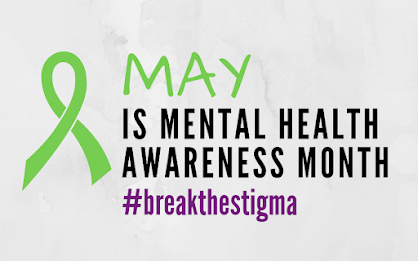MENTAL HEALTH AWARENESS No.3 5.15.23
PTSD - Post Traumatic Stress Disorder
- May occur after you have been through a traumatic event. The word "trauma" is used for many different types of experiences that are stressful. Not all stressful events are the type of trauma that can lead to PTSD. To be at risk for PTSD, the trauma must be a shocking and dangerous event that you see or that happens to you. During this type of event, you think that your life or others' lives are in danger.
- Most of us will experience at least one trauma in our lifetime that could lead to PTSD. There are factors that put you at risk of experiencing trauma, many of which are not under your control. For example, if you were directly exposed to the trauma or injured, you are more likely to develop PTSD. Men and women are likely to experience different types of traumatic events. It is more common for women to be sexually assaulted. Men are more likely to experience accidents, physical assault, combat or to witness death or injury. We are also learning more about how those who identify as transgender or as nonbinary—a gender identity other than male or female—are at risk of trauma. More research needs to be done to understand how trauma risk varies by race and ethnicity, religion, sexuality, disability status, and other social factors.
1. An estimated 70% of adults in the United States have experienced at least one traumatic event in their lifetime.
2. Up to 20% of these people go on to develop post-traumatic stress disorder.
3. An estimated 5% of Americans – more than 13 million people – have PTSD at any given time.
4. Around 8.7% of all adults – 1 in 13 people in the U.S. will develop PTSD at some point in their lifetime.
5. Around 3.6% of adults in the U.S. suffer from PTSD in a given year.
6. Approximately 1 in 9 women will get PTSD at some point in their lifetime, and women are around twice as likely as men to develop the disorder.
7. Surprisingly, 23% of women in the military report being sexually assaulted. And 55% of female veterans and 38% of male veterans experienced sexual harassment while in the military.
8. Researchers found the estimated prevalence of PTSD among veterans ranges from 1.09% to 34.84%.
9. Post-traumatic stress disorder (PTSD) can occur after any traumatic event, not only trauma from wartime.
10. 16% of emergency physicians meet the diagnostic criteria of PTSD.
Around 5% of adolescents experience PTSD.




Comments
Post a Comment